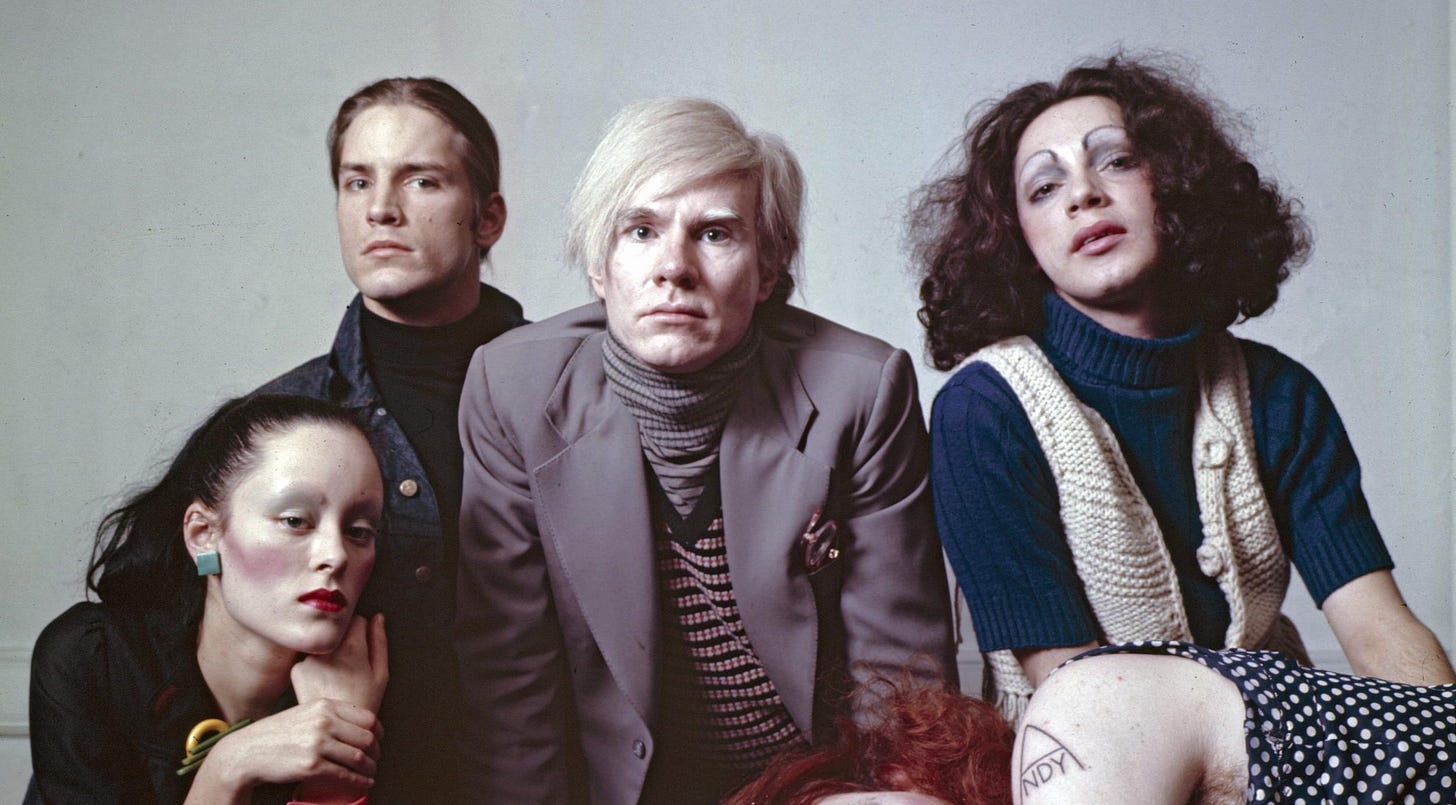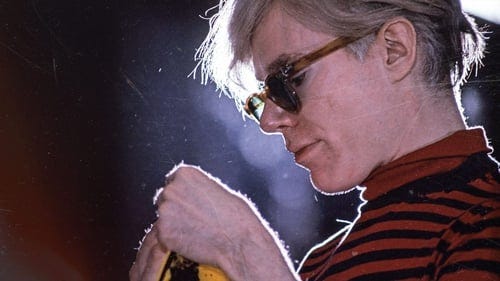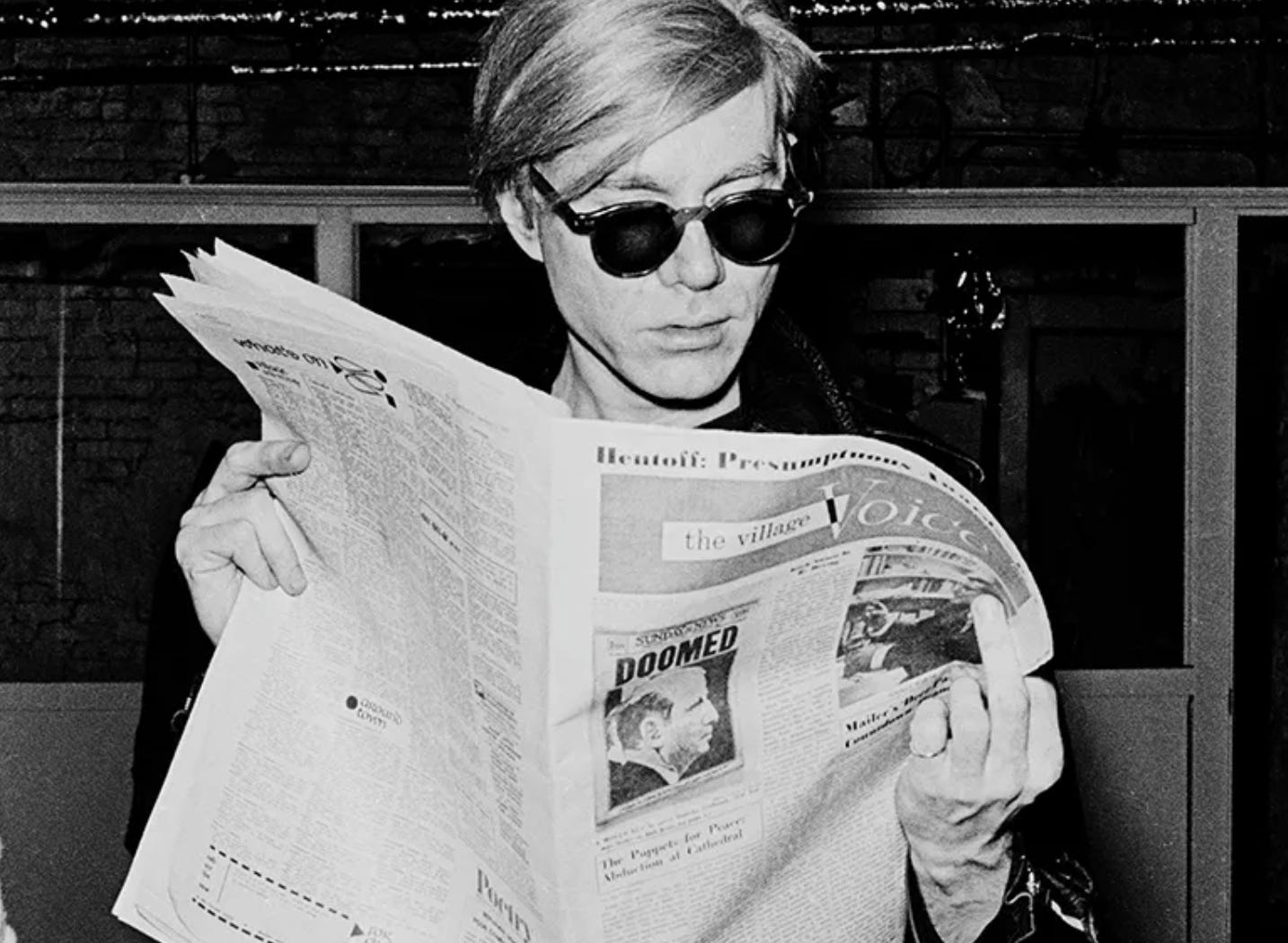The centre of Nicole Flattery’s novel, Nothing Special, is a young typist who finds herself at Andy Warhol’s Factory during New York’s heyday. Centering the women who wrote Warol’s stream-of-consciousness novels, the story isn’t about Warhol at all. Which he would have loved.
The world’s most famous and most profitable image maker, Warhol is widely misrepresented as a narcissist. But the self-portraitist hated his own reflection (he had to wear corsets to hold his bullet-holed torso together). When he said that everyone would be famous for fifteen minutes, he said nothing about everyone wanting it to be so.
“I just do art because I'm ugly and there's nothing else for me to do.” He said, in that manner of blunt self-confession. To Warhol sunlight was the best disinfectant for the kind of personal corrosion he felt so profoundly. And by sunlight, he meant millions of fans (before they were called followers).
I misunderstood Warhol for a long time, unfairly conflating him with the tech-bros who took his art - a Svengali whose long con was making money from the same American disease he parodied. Not so.
As Flattery writes in the book, Warhol’s Factory was the after-school club for New York's broken dolls - of which he was the kind of blueprint. Many of them school-aged, they nestled in the lofts of Warhol’s clubs and found each other.
Like great artists, his art was all about obsession. He obsessively made things that he was obsessed with. He happened to be obsessed with pop culture. Before there was a total blurring of Warhol with the thing he was parodying, he and his cabal of like-minded outsiders were making art from outside the centre. He never considered himself to be in the cool crowd.
Flattery makes this plain too. Her wryly detached style has been used in so many recent It-Girl novels. But where the likes of Ottessa Moshfegh, Olivia Sudjic, or Katie Kitamura share an impulse towards degradation in this style (Sudjic is more subjective, whereas Moshfegh is more sadistic), Flattery’s tone is both dry and deadly serious. She shows a kind of surreal, shimmering vision of the 70s, but she makes plain that, for the Factory crowd, this outsider identity was no shtick, no one-liner to place in their Instagram bio. When you hover around the fringes, or around the gutter, sometimes you’re not looking up at the stars. Sometimes all you see are the other gutter people, and you decide to make a home there.
Flattery shows our disembodied narrator as slowly disintegrating, the hard reality of her womanhood brushing up painfully against an increasingly unreal age. Or one that feels unreal, given the shimmering visions of pop-up ads and the streams of young people heading for their own Kerouac-shaped adventures.
I loved this book. I loved Flattery’s presentation of the other. And how she makes Warhol a spectre. The book takes place around the factory but the man himself barely merits a few lines. I think he would have liked it that way.
Warhol was like a ghost in the machine - a spook whose signature came to bear so strongly on a generation that he tilted it on an axis. The man lived inside his art, hoped it would swallow him whole. Like Pollock, who saw himself in his naturalistic scrabble, Warhol saw himself as his own means of production. “Machines have less problems. I’d like to be a machine, wouldn’t you?” he told Time magazine in 1963.
He was the first of us to achieve it - complete harmony with his screen. Since then, a generation of the reflection-obsessed have been trying to map themselves into the machine in the same way. No one else has had as much success, perhaps because for no one else has it been so important.
For Flattery, the writers and image-makers who flock to the Factory arrive with cult-like zeal for Warhol’s art, and a loneliness inside themselves. They want to be machines too. When they record the transcripts of Warhol’s conversations with Edie Sedgwick, Rauschenberg, his lovers, and his porn star friends, they feel like the apostles, making record of something greater than themselves. They are helping the man - the machine - write itself into a new century, creating the code that will come to define it. When the typist loses one of her scripts, it feels like a little death. The screen generation needs its code. Without it, we are just holding up a black mirror. It might be nothing special that we see.






